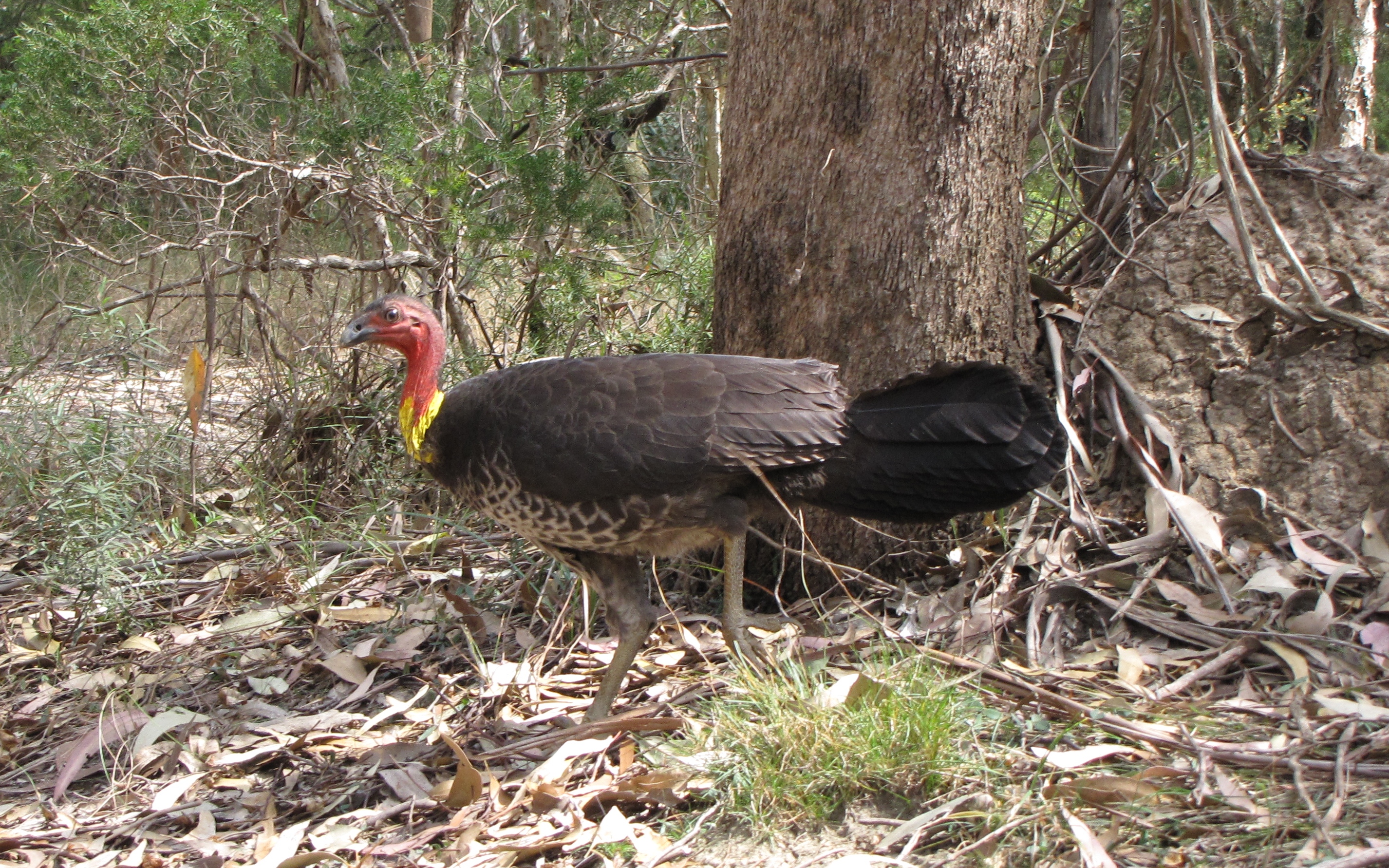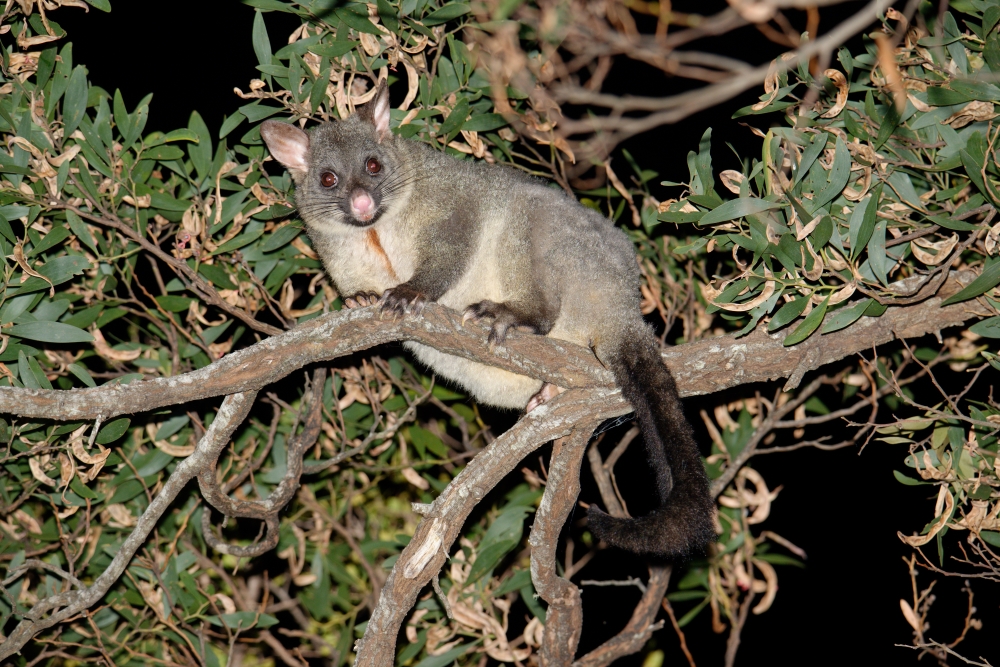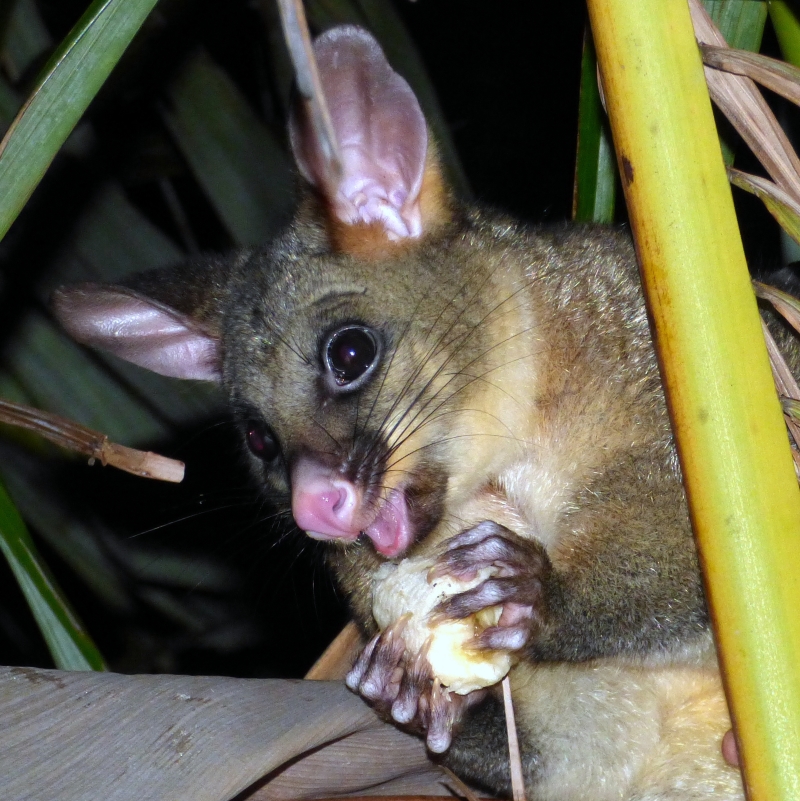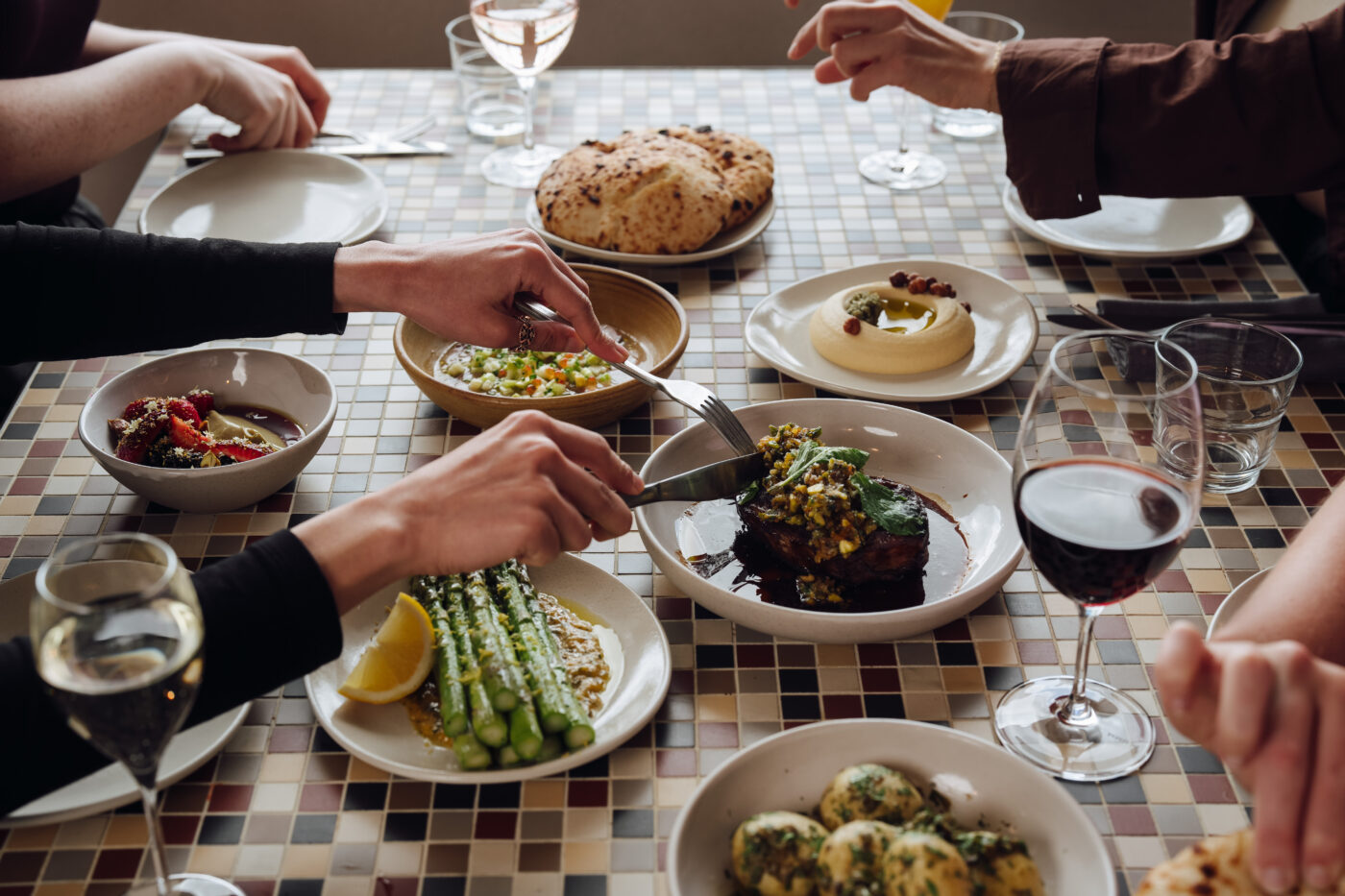Ponds Creek Reserve South
Heading northwards toward Kissing Point Road, you will see a range of different forest types, including Sydney Turpentine Ironbark Forest, fringing the creek line. This vegetation type is now rare due to land clearing and is protected under the NSW Biodiversity Conservation Act 2016.
The trees here are home to a range of wildlife including several species of possums. These nocturnal animals can be spotted at night using torches.
During daylight hours be sure to listen out for the medium sized birds like brush turkeys that are at home here in the open ground with little shrub cover. The Brush Turkey belongs to the family of birds known as megapods because of their large feet. They are mound builders who are territorial.
Some descriptions of the likely birds to keep a keen eye out for are included on the track posts along the walk.

Animals of Ponds and Subiaco Creeks
Common Brushtail Possum – Trichosurus Vulpecula

Brush-tailed Possums are one of the most common marsupials found in Sydney and many make their homes in the trees, nest boxes and tree hollows in the bushlands surrounding the Ponds Walk. Brush-tailed Possums can be identified by their pointed snouts, pink noses, large ears, and long whiskers in addition to the large, brushy tail that gives them their name. Growing to the size of an average domestic cat, Brush-tailed Possums use their sharp claws to climb trees and groom themselves.
Brush-tailed possums will forage for food both in the tree canopy, and on the ground. Their diet includes leaves, shoots and flowers, as well as seeds and fruits. While the majority of their diet is plant-based, Brush-tail possums will also eat worms, caterpillars, and insects. In urban areas, Brush-tailed Possums have also been known to help themselves to discarded pastries, fruits and breads by scavenging through rubbish bins.
Brush-tailed Possums are solitary animals, marking out their territories using secretions from a special scent gland located on their chests. Whilst possum territories do often overlap, fights are relatively rare, though two possums encountering one another in the night may make threatening noises.
While Brush-tailed Possums can breed at any time of the year, their young tend to be born around May – June. Baby possums are known as “joeys” and are born after only 17 days of gestation. Like many marsupials, newborn possums will spend around 5 months in their mother’s pouch after birth, before spending another 2 months clinging to their mother’s back. Possums are fully grown around the age of 10 months old.
While Brush-tailed Possums may be abundant in NSW, they are a protected species under the Biodiversity Conservation Act 2016.



